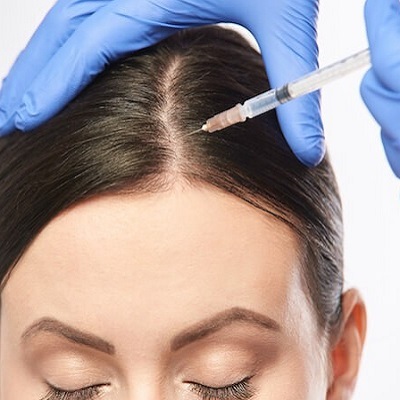Platelet-Rich Plasma (PRP) therapy in Islamabad has become a popular treatment for various conditions, especially in hair restoration, skin rejuvenation, and healing injuries. By using the body's natural growth factors, PRP aims to stimulate repair and growth in targeted areas. Despite its increasing popularity and reported successes, PRP does not always yield the expected results. Several factors can contribute to its failure, and understanding these factors is essential for setting realistic expectations. This blog will explore the main reasons why PRP might not work effectively for some individuals.
1. Inadequate Candidate Selection:
One of the leading causes of PRP failure is that it may not be suitable for every individual. Not everyone is an ideal candidate for PRP therapy, and this is especially true for those with advanced hair loss, severe skin damage, or certain underlying medical conditions. PRP works by stimulating existing follicles or repairing damaged tissues, so if the condition is too advanced (e.g., total baldness or deep scars), the potential for PRP to succeed diminishes.
For instance, in hair restoration, PRP is most effective when the hair follicles are still viable but weakened. If hair follicles have completely died, as in the later stages of androgenetic alopecia, PRP may have little effect, leading to disappointment for patients expecting significant regrowth.
2. Improper PRP Preparation:
The effectiveness of PRP therapy can be heavily influenced by how the PRP is prepared. The concentration of platelets in the plasma needs to be optimal for successful results. The process involves drawing blood from the patient and spinning it in a centrifuge to separate the platelet-rich plasma from other components. However, if the centrifugation process is not carried out properly or if the concentration of growth factors is too low, the PRP may not be as potent, which can result in the treatment failing to stimulate the desired effects.
Practitioners also vary in their methods of platelet concentration and injection techniques. Clinics with inexperienced or unqualified personnel may not follow the proper protocols, leading to lower success rates. It is critical to choose a skilled and experienced provider who uses proper equipment and follows best practices.
3. Unrealistic Expectations:
Another common reason why PRP treatments may "fail" is due to unrealistic expectations. PRP is not a miracle solution, and the results are often gradual and moderate, rather than dramatic. Some patients expect immediate, drastic changes after a session or two, which leads to dissatisfaction. In hair restoration, for example, noticeable results may take several months and may require multiple sessions for optimal outcomes. Likewise, skin rejuvenation with PRP often results in subtle, natural-looking improvements over time rather than an overnight transformation.
It’s also important to note that PRP does not always work equally well for everyone. Some people may experience only mild improvements, while others may see significant changes. This variability can cause disappointment in those expecting a uniform outcome.
4. Inconsistent Treatment Protocols:
Another contributing factor to PRP failure is inconsistency in treatment protocols. There is no universal standard for PRP therapy, and the frequency, dosage, and injection techniques may vary from one clinic to another. For PRP to be most effective, many patients require multiple sessions spaced over several months. Skipping sessions or following an irregular treatment plan can lead to unsatisfactory results. Moreover, some clinics may offer PRP as a standalone treatment when, in reality, combining it with other therapies, such as microneedling or topical treatments, may yield better results.
5. Underlying Health Conditions:
Health conditions can play a significant role in PRP success or failure. Individuals with certain medical conditions, like blood disorders, autoimmune diseases, or chronic infections, may not respond well to PRP therapy. These conditions may interfere with the body’s ability to heal or regenerate, which limits PRP’s effectiveness. Additionally, patients on certain medications, such as blood thinners, may also have reduced success rates since these medications affect platelet function, making it harder for PRP to work effectively.
6. Lack of Maintenance Treatments:
PRP therapy is often not a one-time solution. Many patients require maintenance treatments to sustain their results, especially in hair restoration. After the initial series of treatments, follow-up sessions are typically recommended every six months to a year. Failing to schedule these maintenance treatments can result in the reversal of progress made during earlier sessions, leading to a perception that the PRP has failed.
7. Lifestyle Factors:
Lifestyle factors can also impact the success of PRP therapy. Smoking, excessive alcohol consumption, poor nutrition, and lack of exercise can all reduce the body’s natural healing capacity, which in turn reduces PRP’s effectiveness. For PRP to work optimally, it’s essential that the patient is in good overall health and leads a lifestyle that supports healing and tissue regeneration.
Conclusion:
While PRP therapy offers promising benefits for hair restoration, skin rejuvenation, and healing, it is not always successful. Factors such as poor candidate selection, improper preparation, unrealistic expectations, and inconsistent treatment protocols can lead to treatment failure. Moreover, underlying health conditions and lifestyle choices may reduce the therapy’s effectiveness. To maximize the chances of success with PRP, it is crucial to consult with an experienced provider, follow a consistent treatment plan, and maintain realistic expectations. By understanding the potential challenges and risks, patients can make more informed decisions and improve the likelihood of positive outcomes.
For more information visit Dynamic Clinic PK





Comments